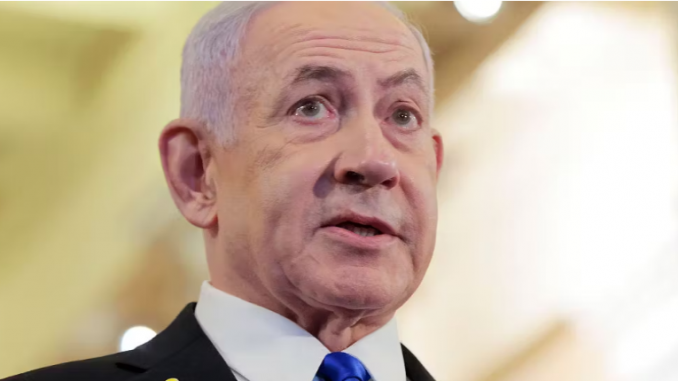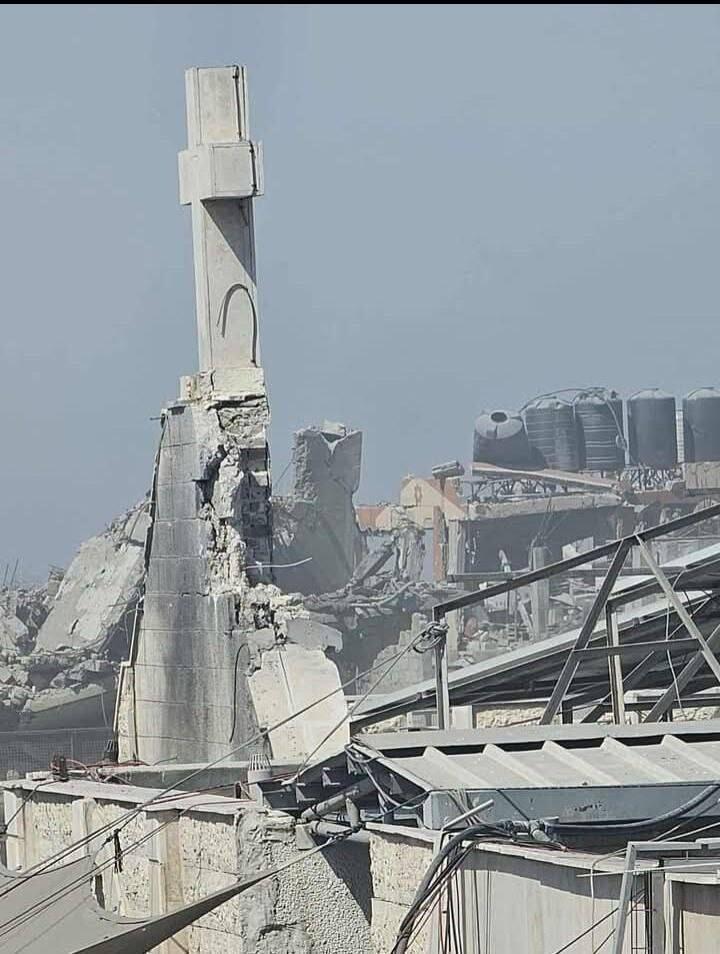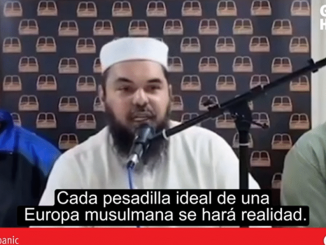
| Published July 17, 2025
Three people killed and 10 injured when stray fire hit Gaza’s Holy Family Church; Latin Patriarchate confirms casualties; Italy and France condemn strike, while IDF says it’s investigating and pledged to protect civilians and religious sites
GAZA – What was once a haven of peace amid the chaos of war became a scene of tragedy on the evening of December 16, 2023, when an Israeli Defense Forces (IDF) missile mistakenly struck the compound of the Holy Family Parish, the only Catholic church in Gaza. The strike, intended for a Hamas command center allegedly operating nearby, instead killed two Christian women sheltering inside the church grounds—an event that drew condemnation and sorrow from religious and political leaders around the globe.
The IDF expressed “deep regret” over the incident, stating that the target of the strike was a legitimate Hamas position. According to Israeli officials, Hamas fighters were launching attacks from near the church complex and using civilian areas—including places of worship—as shields. However, for many, the tragic death of the women—later identified as a mother and daughter—raised painful questions about the cost of war, the limits of precision warfare, and the shrinking space for innocent civilians in Gaza.
Israeli Prime Minister Benjamin Netanyahu responded to the tragedy by acknowledging that “every innocent life lost is a tragedy,” while reiterating Israel’s stance that Hamas embeds itself deliberately in civilian infrastructure. “Our war is not with the people of Gaza,” Netanyahu said in a televised statement. “We’re doing everything we can to minimize civilian casualties, but the reality is that Hamas is hiding behind civilians, in schools, in mosques, and tragically, even in churches.”
A Global Wave of Grief
The Vatican responded swiftly. Pope Francis, who has repeatedly called for a ceasefire in Gaza, said he was “deeply saddened” by the deaths and prayed for the victims and their families. “Even places of worship are no longer safe,” the pontiff lamented during his Sunday Angelus address, describing the Holy Family Parish as a symbol of Christian presence and unity in a war-torn land. He appealed once more for “an end to all hostilities” and for “respect for international humanitarian law.”
According to the Latin Patriarchate of Jerusalem, the missile struck a convent building within the church grounds where dozens of Christian families were taking refuge. Reports from the area say some survivors had limbs amputated due to their injuries, while others now fear further attacks even in places they once believed were off-limits to military engagement.
Civilian Lives in the Crossfire
The IDF’s initial statement claimed they were targeting a Hamas “command and control center” near the church, and that the strike was carried out with intelligence indicating military use of adjacent buildings. Yet satellite imagery and eyewitness testimony suggest the church compound itself bore the brunt of the blast. While Israel maintains that it was not the intended target, critics argue the growing death toll among civilians—particularly women and children—requires more than regret. It demands accountability.
The incident has drawn renewed scrutiny from international watchdogs and humanitarian groups. The German news outlet Deutsche Welle reported that while Israel’s admission of error is rare and notable, it does not absolve the need for investigations into potential violations of the rules of armed conflict.
A Dwindling Flock
Gaza’s Christian population—once in the thousands—is now estimated to number fewer than 1,000. The Holy Family Church has long been a spiritual anchor for this small but steadfast community. Its compound provided not only spiritual guidance but also physical refuge throughout repeated conflicts between Israel and Hamas. The recent strike has left many Christian families in despair, unsure where to go next.
“We no longer feel safe in our own sanctuary,” said one local Christian, who asked not to be named for security reasons. “We have no homes, no schools, no medical aid. Now even our church is under attack.”
War, Faith, and the Cost of Error
The tragedy at the Holy Family Church is emblematic of the moral and strategic challenges facing both Israel and the international community. The war in Gaza, sparked by Hamas’s surprise October 7 attack on southern Israel that killed over 1,200 people, has since evolved into a punishing military campaign that has left over 30,000 Palestinians dead, according to local health authorities.
For many Israelis, the offensive is seen as a necessary operation to dismantle a terror group that threatens their very existence. For Palestinians—and increasingly, for onlookers across the globe—the growing list of civilian casualties calls for a reevaluation of what justice, proportionality, and humanity should look like in modern warfare.
As the world mourns yet another loss of innocent life, the echo from Gaza’s only Catholic church rings loud and clear: in war, even sacred walls offer no guaranteed protection.
The Holy Family Catholic Church in Gaza
 Implications:
Implications:
1. Religious and Moral Fallout
-
Global Christian backlash: The strike on the Holy Family Church risks alienating Christian communities worldwide, especially Catholic leaders and faithful, who now see even religious sanctuaries being drawn into the conflict. Pope Francis’s visible sorrow amplifies this reaction.
-
Moral pressure on Israel: Even though Israel expressed regret, targeting near religious institutions—especially during the Advent season—undermines its moral position in the eyes of international observers, including allies.
2. Diplomatic and Geopolitical Consequences
-
Strained international support: Incidents like this could increase pressure on Western allies (particularly in Europe and Latin America) to publicly criticize or distance themselves from Israeli military policy in Gaza.
-
Fuel for anti-Israel sentiment: Islamist groups and hostile regimes could use this event to stir up anti-Israel propaganda, portraying the conflict as a religious war rather than a political and security conflict.
-
Calls for ceasefire gain momentum: The attack adds weight to growing international demands—including from the UN, Vatican, and NGOs—for a ceasefire or humanitarian pause.
3. Humanitarian Ramifications
-
Shrinking safe zones for civilians: The strike underscores how even spaces historically respected during wartime—like churches and mosques—are no longer viewed as inviolable, which may further terrorize and displace civilians.
-
Increased scrutiny of Israel’s military tactics: The event adds to calls for independent investigations into Israeli targeting practices, especially regarding urban warfare and strikes near civilian infrastructure.
4. Impact on Christian Communities in the Middle East
-
Further Christian exodus from Gaza: Already a dwindling minority, the small Christian population may now feel even more compelled to flee Gaza or even the broader region, accelerating the decline of Christianity in its historical birthplace.
-
Interfaith tension risk: While not intentional, the strike could still strain Jewish-Christian relations in the region, and raise concerns in Arab countries with Christian minorities.
5. Media and Narrative Implications
-
Loss of narrative control by Israel: Despite claims of Hamas using civilian shields, high-profile tragedies like this undercut Israel’s messaging and strengthen the perception of indiscriminate force.
-
Bolstering Hamas’s information war: Hamas can exploit this incident to portray Israel as indiscriminately targeting religious minorities and use it to justify continued resistance or retaliation.
6. Legal and Ethical Questions
-
Potential war crimes scrutiny: While accidental, the incident could fall under investigation by international bodies like the UN or ICC as part of broader probes into possible violations of international humanitarian law.
-
Debate over military necessity vs. civilian protection: The event reignites global discussions about the ethical limits of precision warfare in dense urban settings.
 Overall Takeaway:
Overall Takeaway:
The mistaken strike on Gaza’s only Catholic church is more than just a tragic wartime error—it is a symbol of the collapsing boundaries between combatants and civilians, between military targets and sacred spaces. While Israel maintains that Hamas uses civilian infrastructure as shields, the deaths of two innocent Christian women within a sanctuary long seen as untouchable mark a chilling milestone in the war’s human toll.
This incident has deepened moral outrage, shaken Christian communities worldwide, and intensified global demands for a ceasefire and greater accountability. It also highlights the broader truth that in modern warfare, especially in densely populated areas like Gaza, even places of peace can become casualties.
As the war grinds on, the world is left grappling with urgent questions: How do we protect innocent lives when war is waged among them? Can precision airstrikes ever truly be precise amid human shields and narrow alleyways? And what, ultimately, is the cost of national defense when sanctuaries become graves?
The answers to these questions will shape not only the course of this conflict, but the moral legacy it leaves behind.





